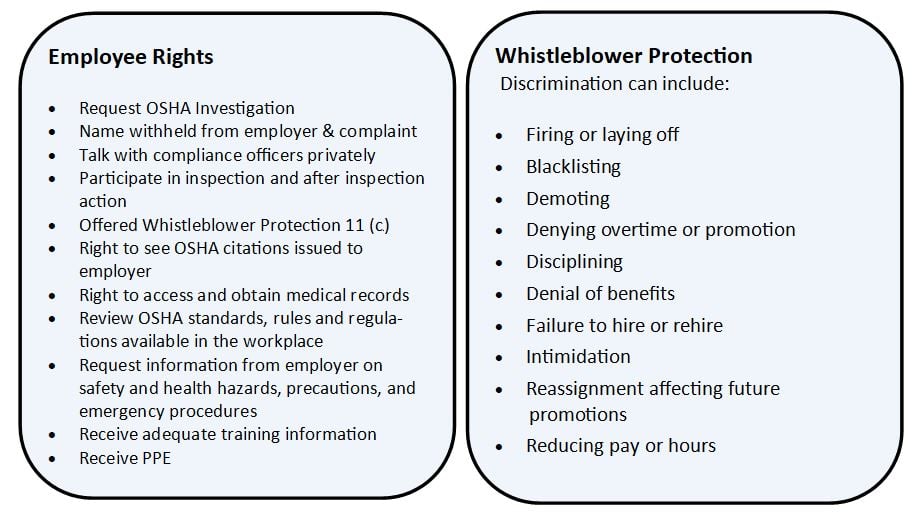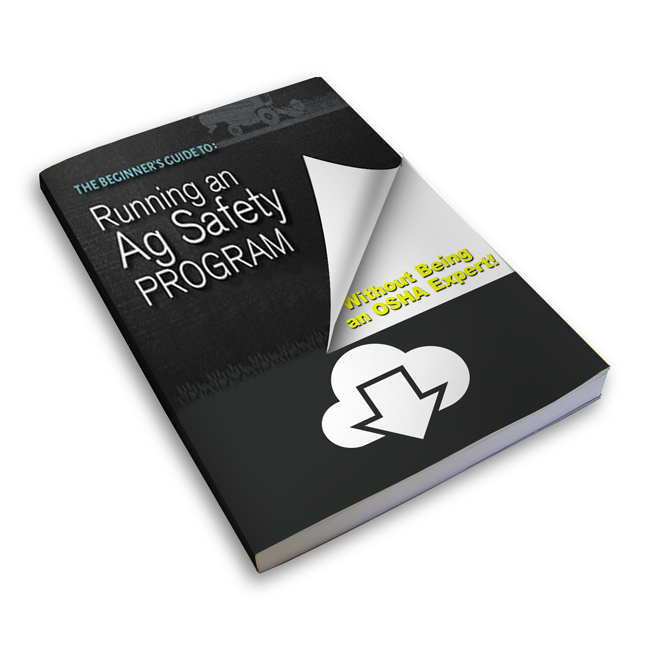This is the first part of a 3 part series on OSHA inspections. See here for the other parts:
- Click here for Part 2 - What to do when they show up?
- Click here for Part 3 - What Will They Be Looking For?
There are 6 reasons that actuate an OSHA inspection in workplaces and they follow an order of priority. OSHA carefully prioritizes all complaints it receives based on their severity. It's best to understand them as each type can bring out an OSHA inspector for very different reasons. Normally OSHA conducts inspections without advance warning.
Chuck Palmer, partner in the Wisconsin-based law firm Michael Best & Freidrich LLP told a group sponsored by Farm Credit East says “OSHA is not going to give you advance notice of an inspection. They bank upon surprise.” It has been a trend over the last eight years. Because of limited resources, OSHA’s philosophy has been that of enforcement, the agency will send a notice to other employers that they could be next, much like motorists slow down when they see a police officer giving a driver a ticket on the side of the roadway.

Let’s examine these priorities starting with top priority first.
1. Imminent Danger Situations
This situation gets top priority, these are hazards that could cause death or serious physical harm. Compliance officers will ask employers to correct these hazards immediately or remove the endangered employees.
2. FAT / CAT – (Fatality / Catastrophe) Severe Injuries and Illnesses -
The second-high priority event that will bring OSHA out for an inspection is when there are fatalities or multiple severe injuries. A fatality/catastrophe or sometimes referred to as FAT/CAT, are situations where the employer is required to notify OSHA within a time limit of the incident.
All work-related fatalities must be reported to OSHA by the employer within 8 hours after the death of any employee. They may also come out for an inspection after the in-patient hospitalization of one or more employees or an employee’s amputation, or an employee’s loss of an eye, as a result of a work-related incident. These incidents must be reported to OHSA by the employer within 24 hours.
The incidents can be reported by telephone or in person to the OSHA Area Office that is nearest to the incident. If the office is closed, employers can report by telephone (800-321-6742) or by electronic application located on OSHA’s public website.
3. Worker Complaints
The OSH Act give employees and their representatives the right to file a complaint and request an OSHA inspection of their workplace if they believe there is a serious hazard or their employer is not following OSHA standards. Workers do not need to know any of the standards to file the complaint. Signed complaints submitted to an area or regional office will more than likely result in onsite OSHA inspection. Workers can submit complaints on-line, fax, mail or by telephone. Workers are protected by the whistleblower protection program. It’s not unusual for a terminated employee to file a claim against their formal employer.

4. Referrals
Referral receive consideration for inpections when they come from other federal, state, local agencies, individuals, organizations or the media. An example would be if the police or coroner saw something while on your property, they could suggest an inspection to OSHA. Another example that is less common is a self-referral where someone is driving by and sees something they interpret as imminent danger, they could turn it in to OHSA. Another area not to overlook is the media. If something is posted in the media and is public knowledge, an OSHA inspector could investigate. Again these are uncommon, however they do happen and fall under this category of referrals.
5. Targeted Inspections
OSHA has programs targeted at high-hazard industries or individualized workplaces that have experienced high rates of injuries and illnesses. These programs also receive priority. In general industry, OSHA has Site Specific Targeting (SST), and in construction OHSA has Dodge reports. There are also Emphasis Programs that can be either local or national called Local Emphasis Programs (LEP) or National Emphasis Programs (NEP). These programs target high-hazard industries. An example of this is a LEP for the dairy industry in both Wisconsin and New York where they target a certain number of farms each year.
6. Follow-up Inspections
A follow up inspection may occur where the OSHA inspector checks for abatement of violations cited during previous inspections.
Closing Thoughts
OSHA is committed to strong, fair and effective enforcement of safety and health requirements in the workplace. It's prudent to prepare in advance, have a protocol on how to manage the inspection and follow-up. They are not opposed to making an example of your operation for like businesses in your industry to take notice. OSHA is coming to agriculture, do not avoid being OSHA complient thinking it won't happen to me. Let's be prepared so everyone can GET HOME SAFE.
Keep reading: Read Part 2 - What to do when they show up? now!



